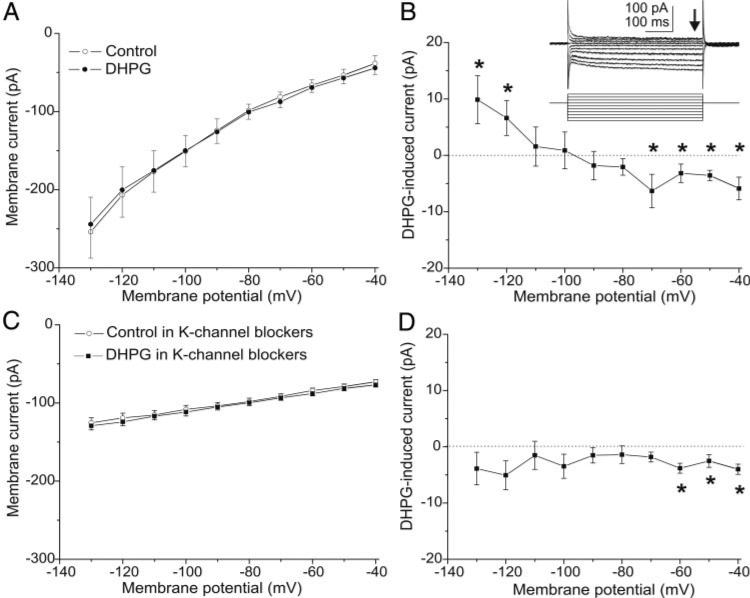Fig. 5.
DHPG evokes an inward current in GCs. Currents elicited by 10-mV voltage steps (500 ms, Vhold = –70 mV) from –130 to –40 mV were recorded before and during DHPG application. Experiments in A–D were performed with blockers of fast synaptic transmission [CNQX (10 μM), APV (50 μM), gabazine (5 μM)] and TTX (1 μM) in the bath. A: current-voltage (I-V) curves generated under control conditions (○) and during bath application of DHPG (50 μM, •); plots represent group data from 8 mouse GCs. B: DHPG-induced inward current obtained by subtracting the 2 I-V curves in A reversed polarity close to –100 mV, near the estimated potassium equilibrium potential (–96 mV). *, values that are significantly different between the 2 curves in A. Inset: voltage steps and corresponding currents in the DHPG condition in A; ↓, steady-state currents used to plot I-V curves. C: I-V curves generated with potassium channel blockers in the bath (300 μM BaCl2, 100 μM 4-aminopyridine, 20 mM TEA, 5 mM CsCl) before (○) and during (•) DHPG application; plots show group data from 6 GCs. D: with potassium channel blockers in the bath the DHPG current was eliminated at hyperpolarized membrane potentials. *, values that are significantly different between the 2 curves in C.

